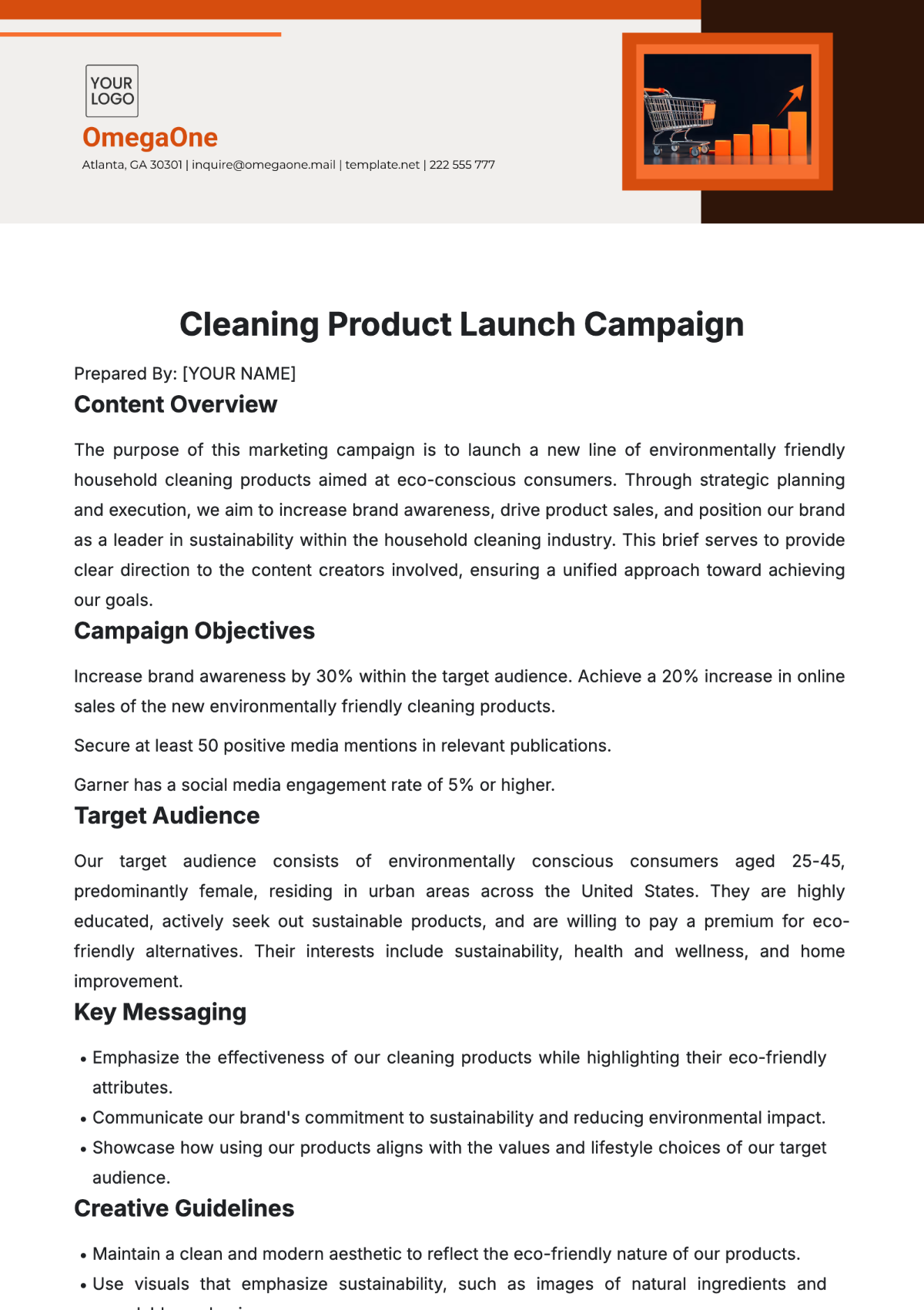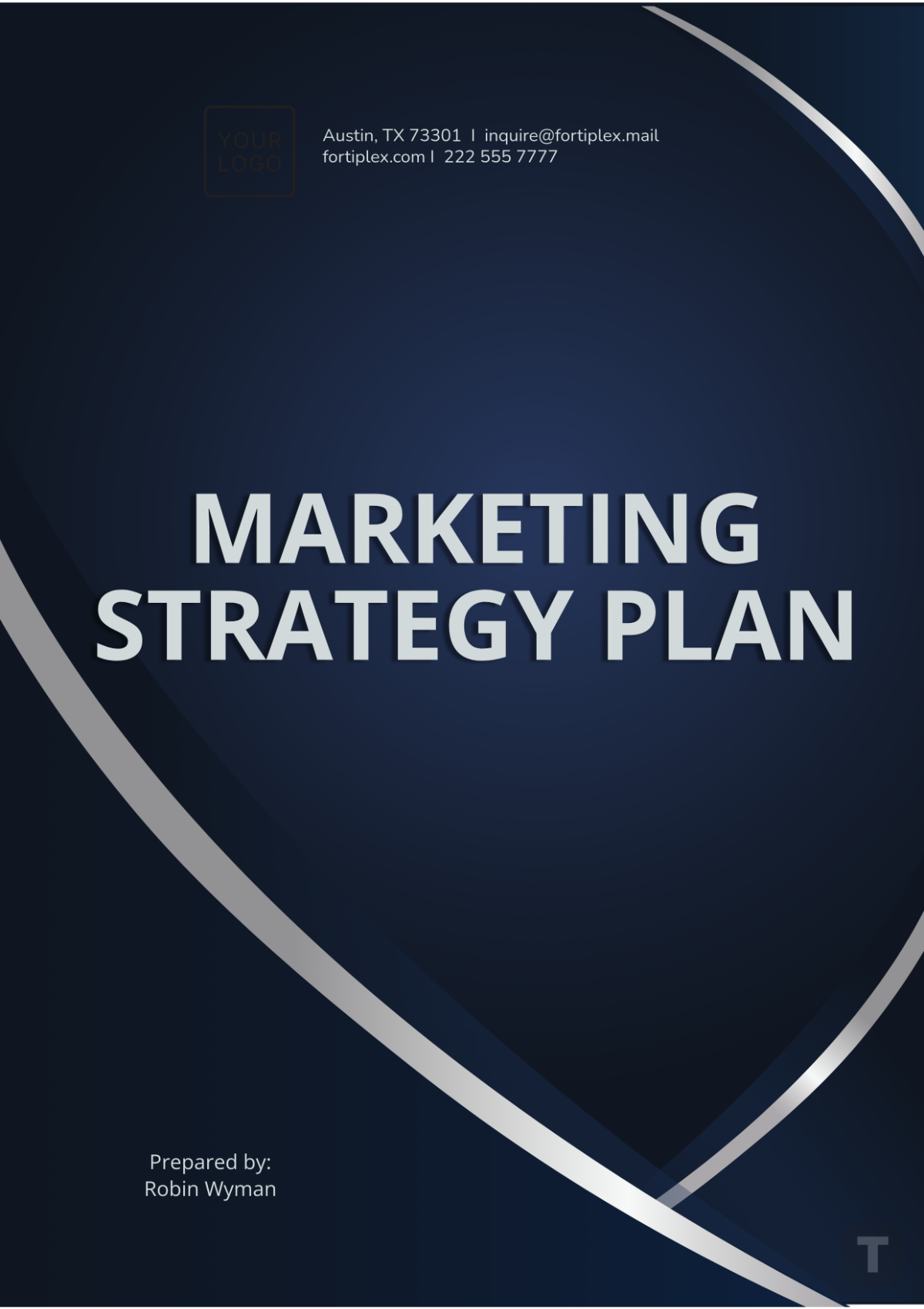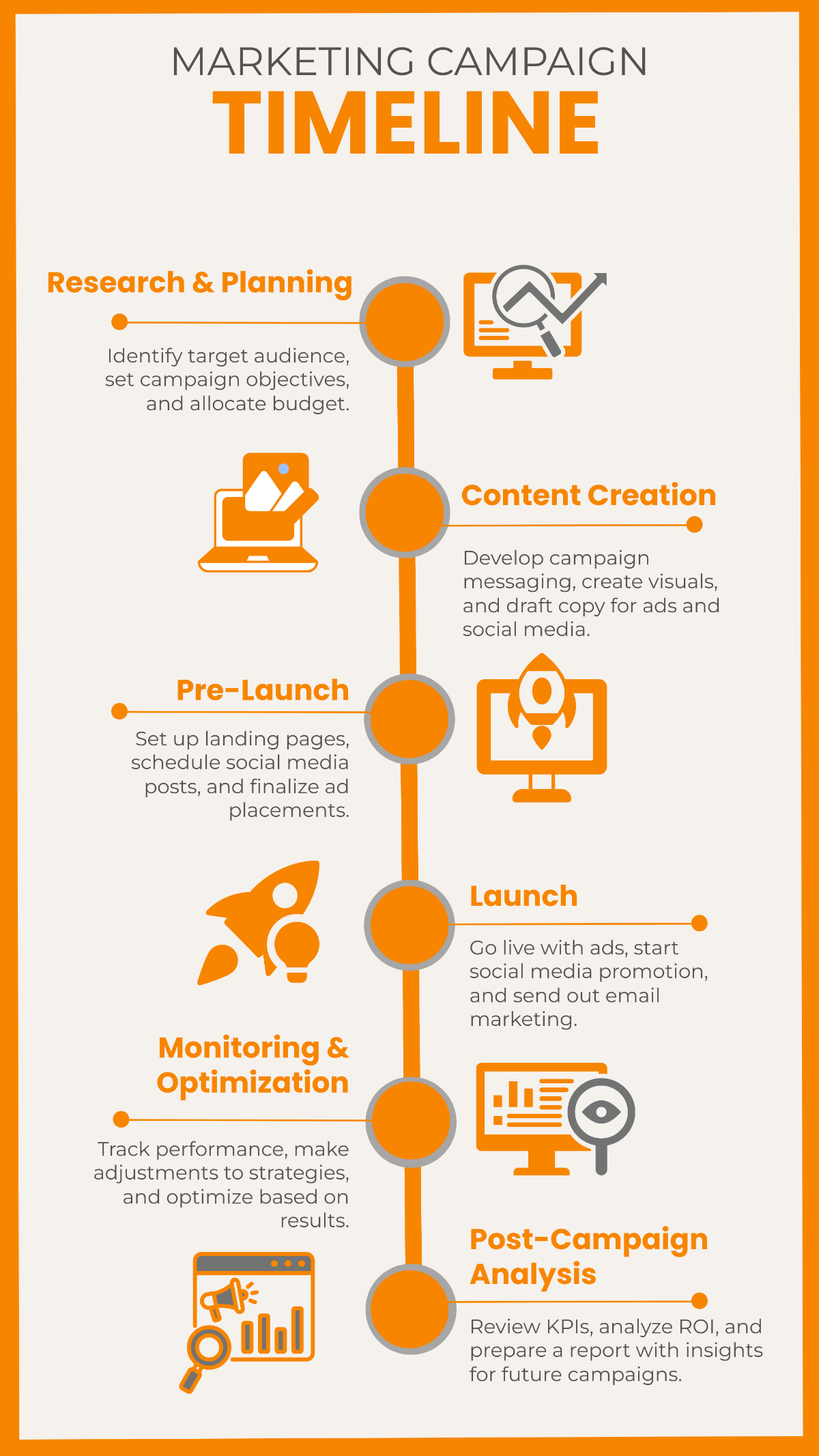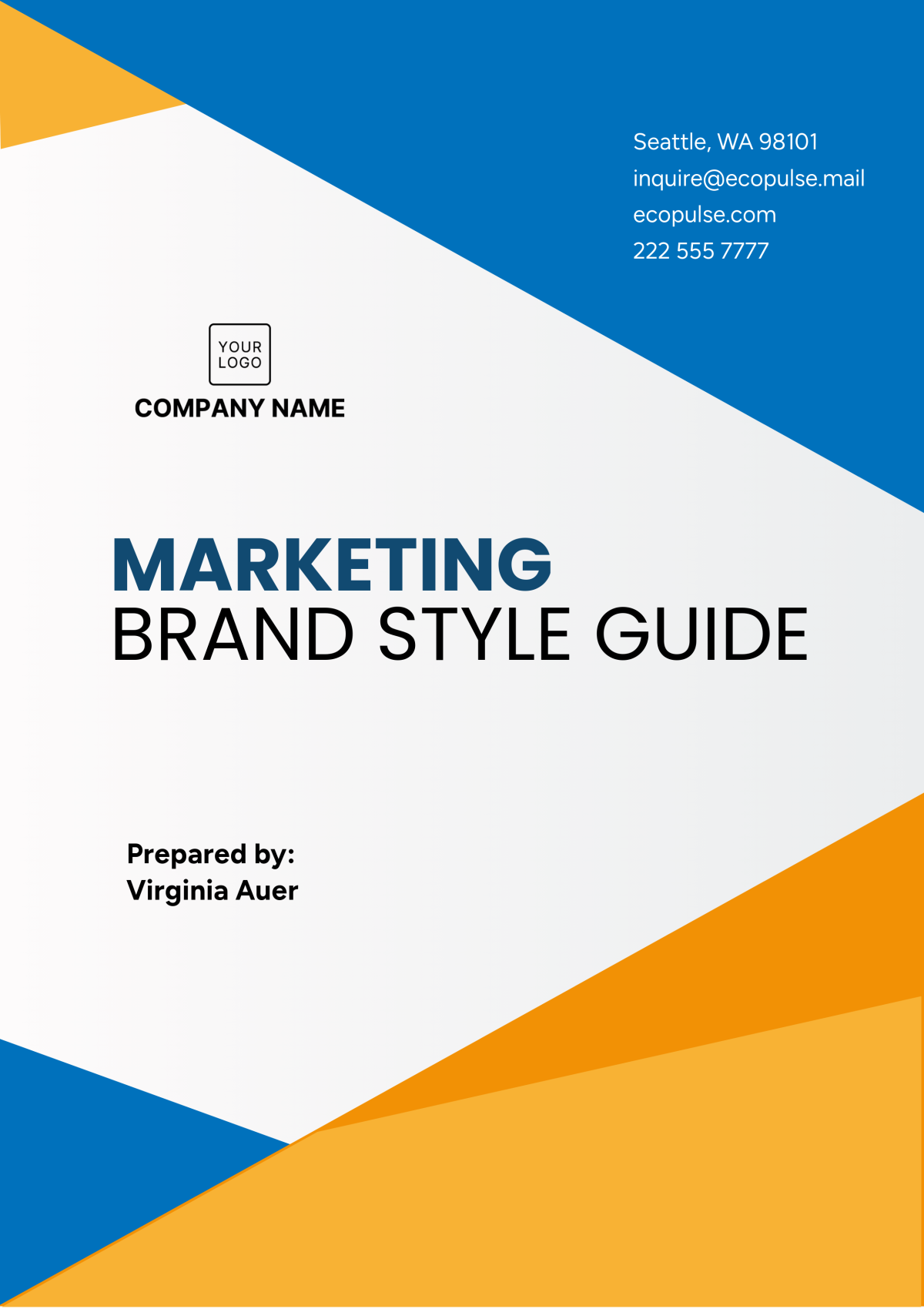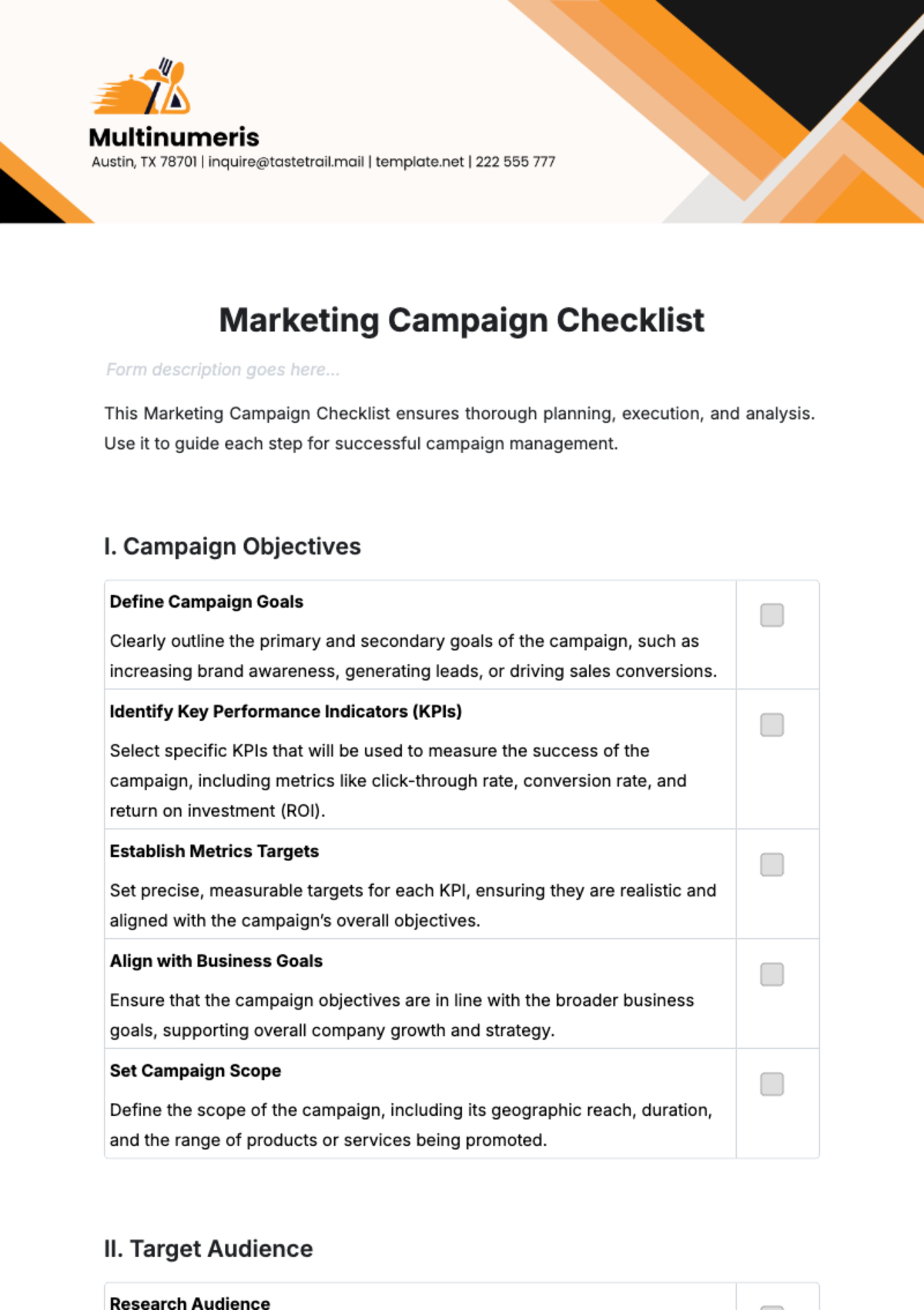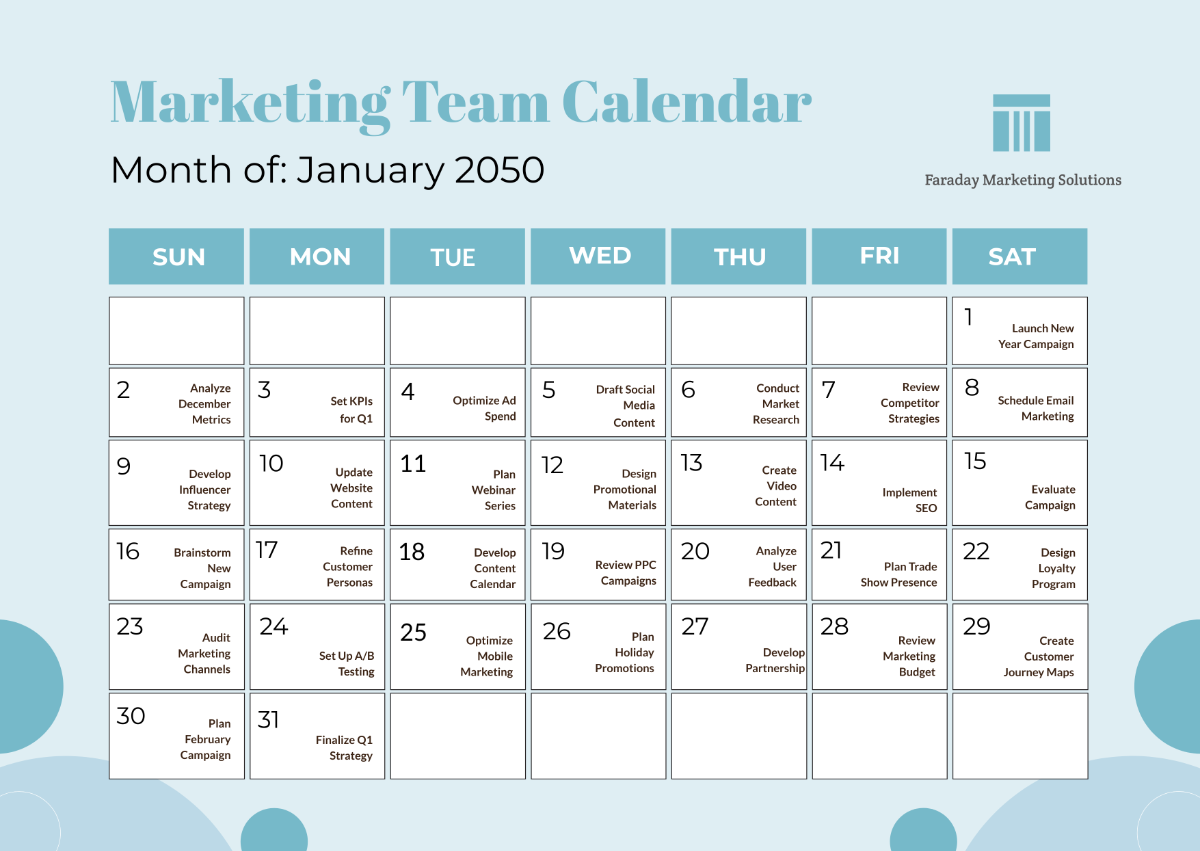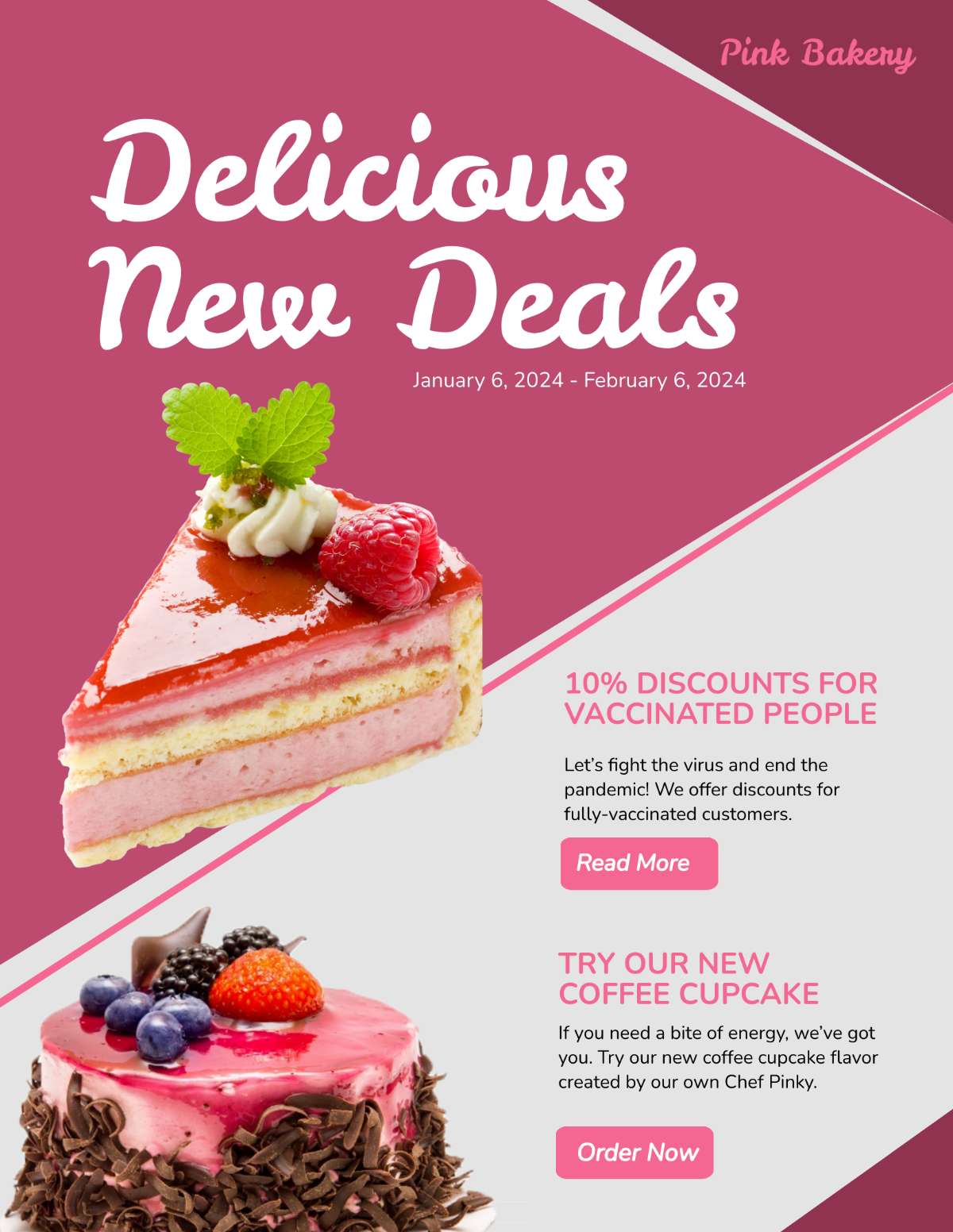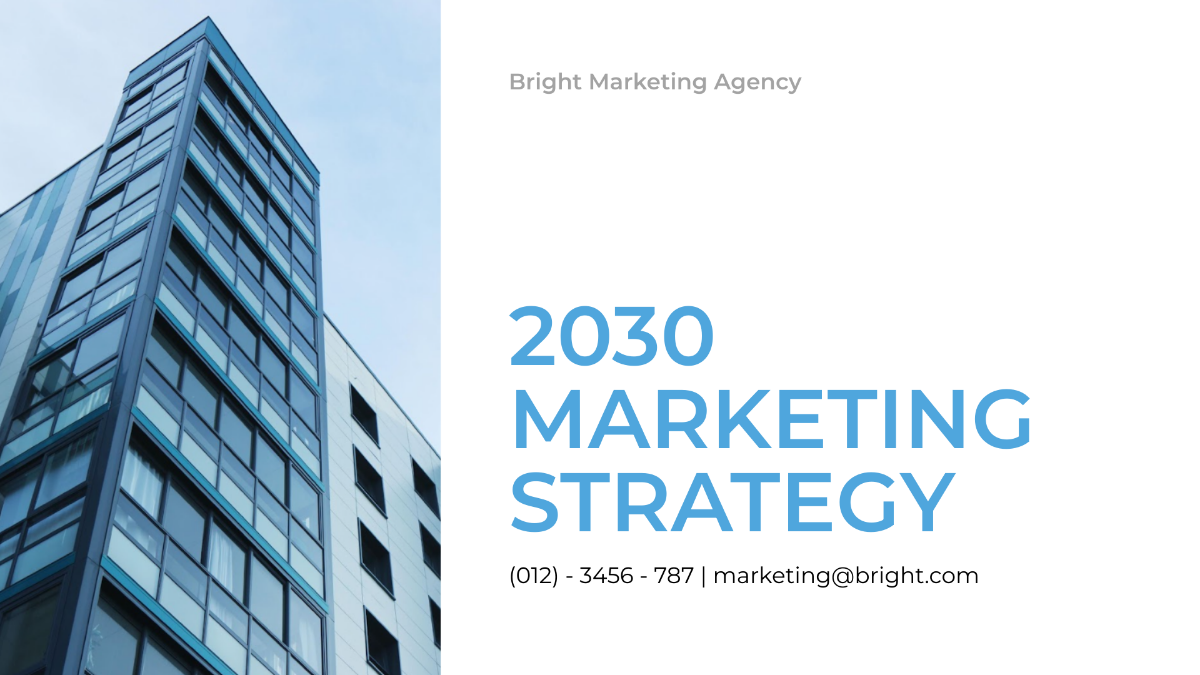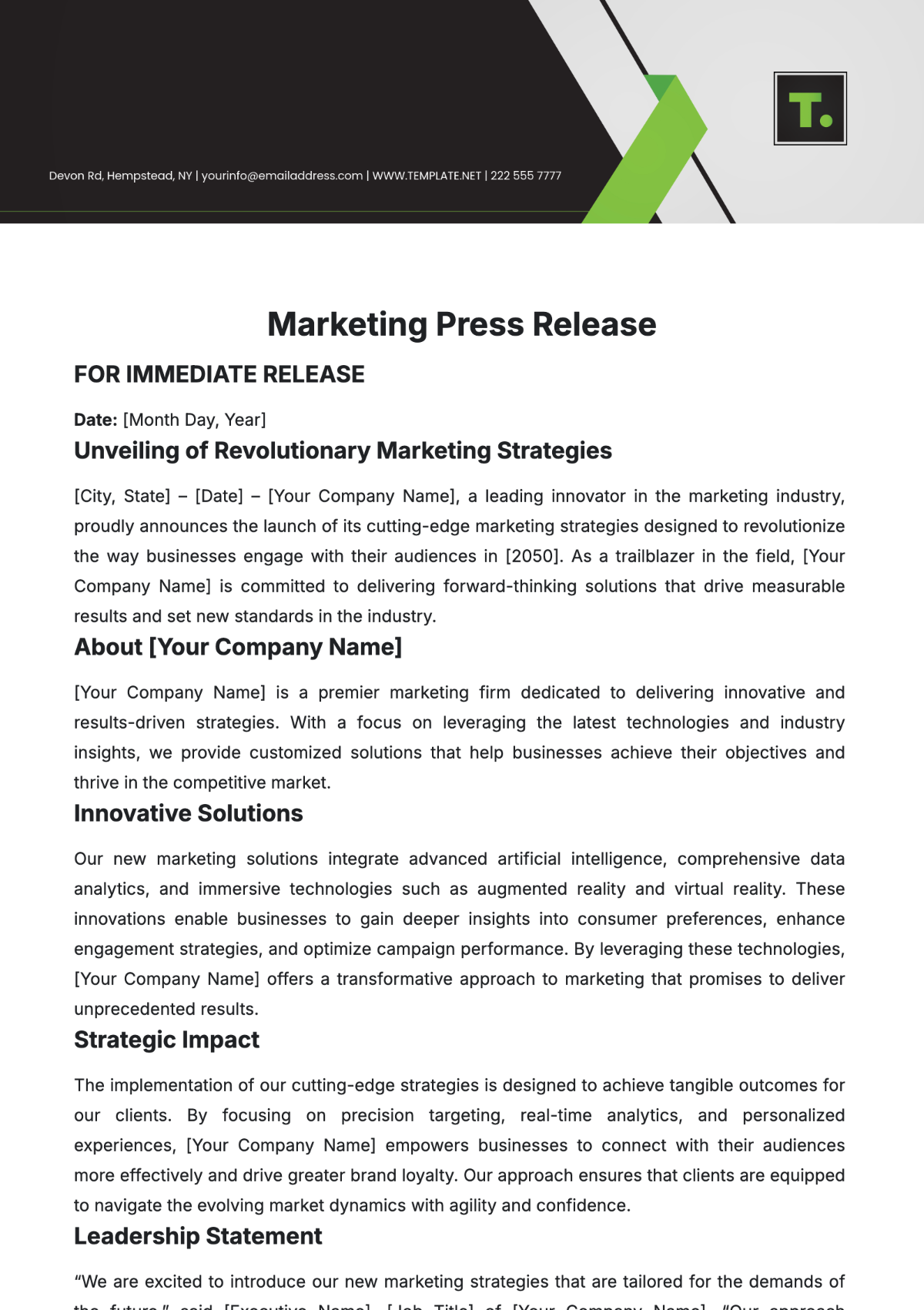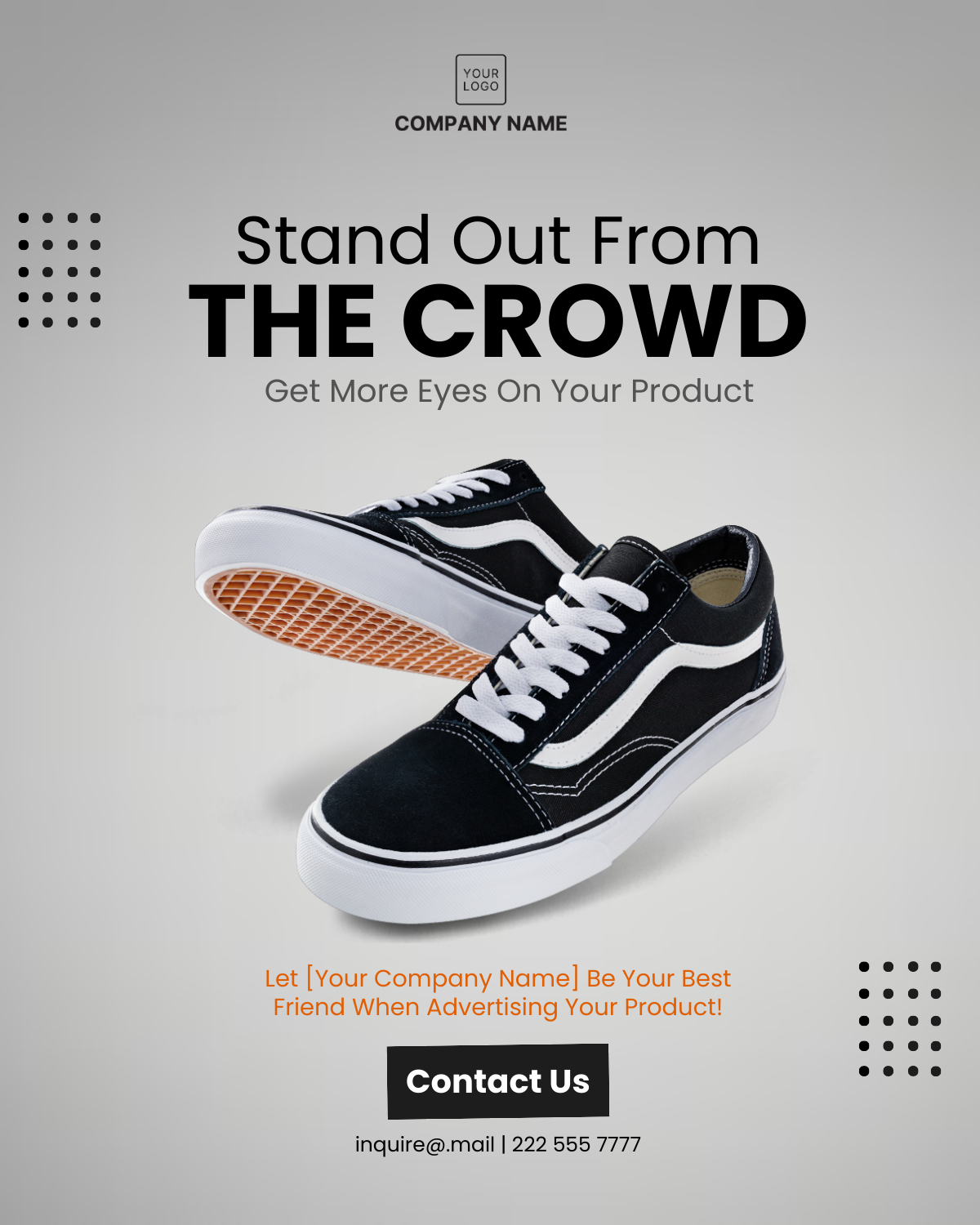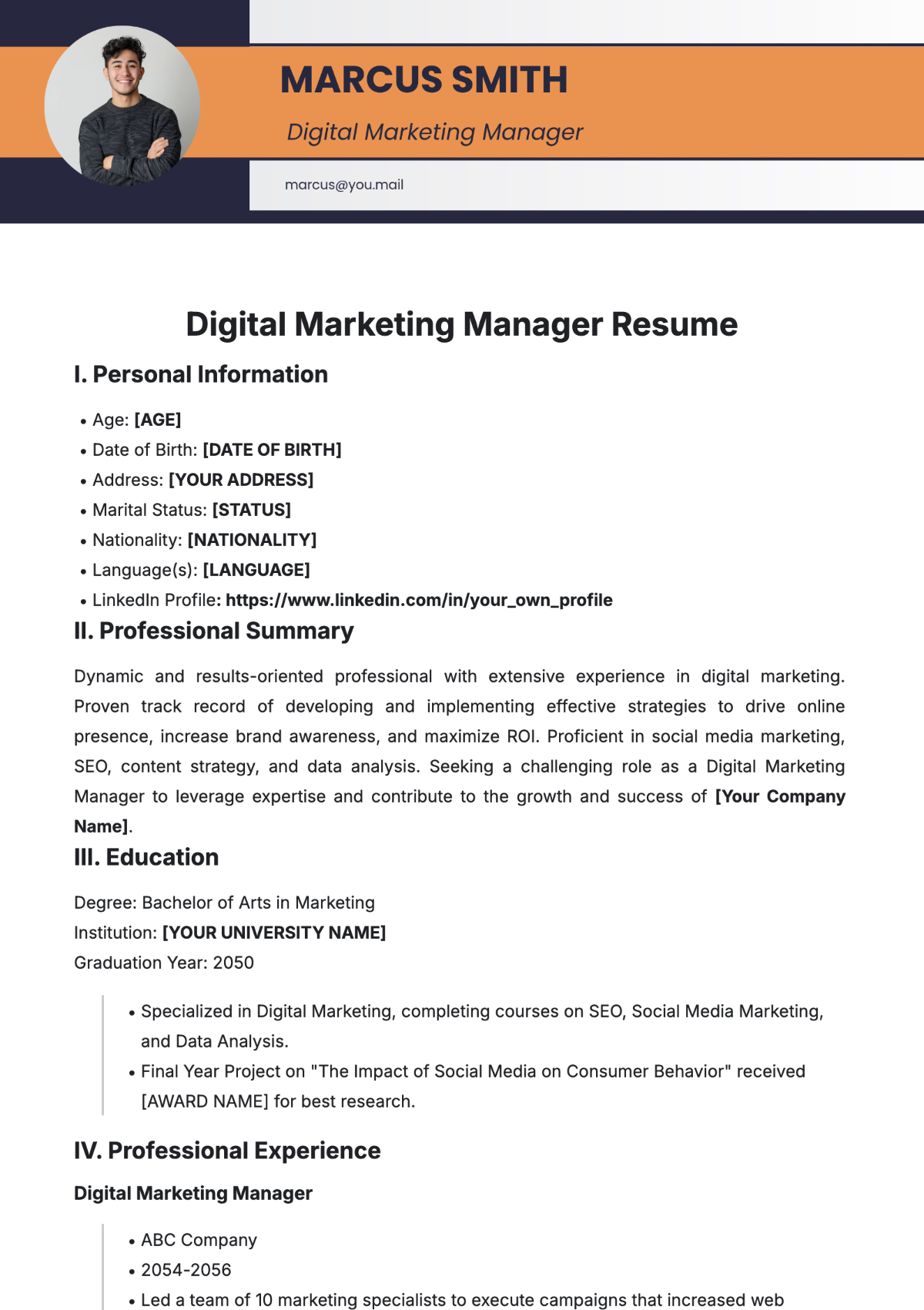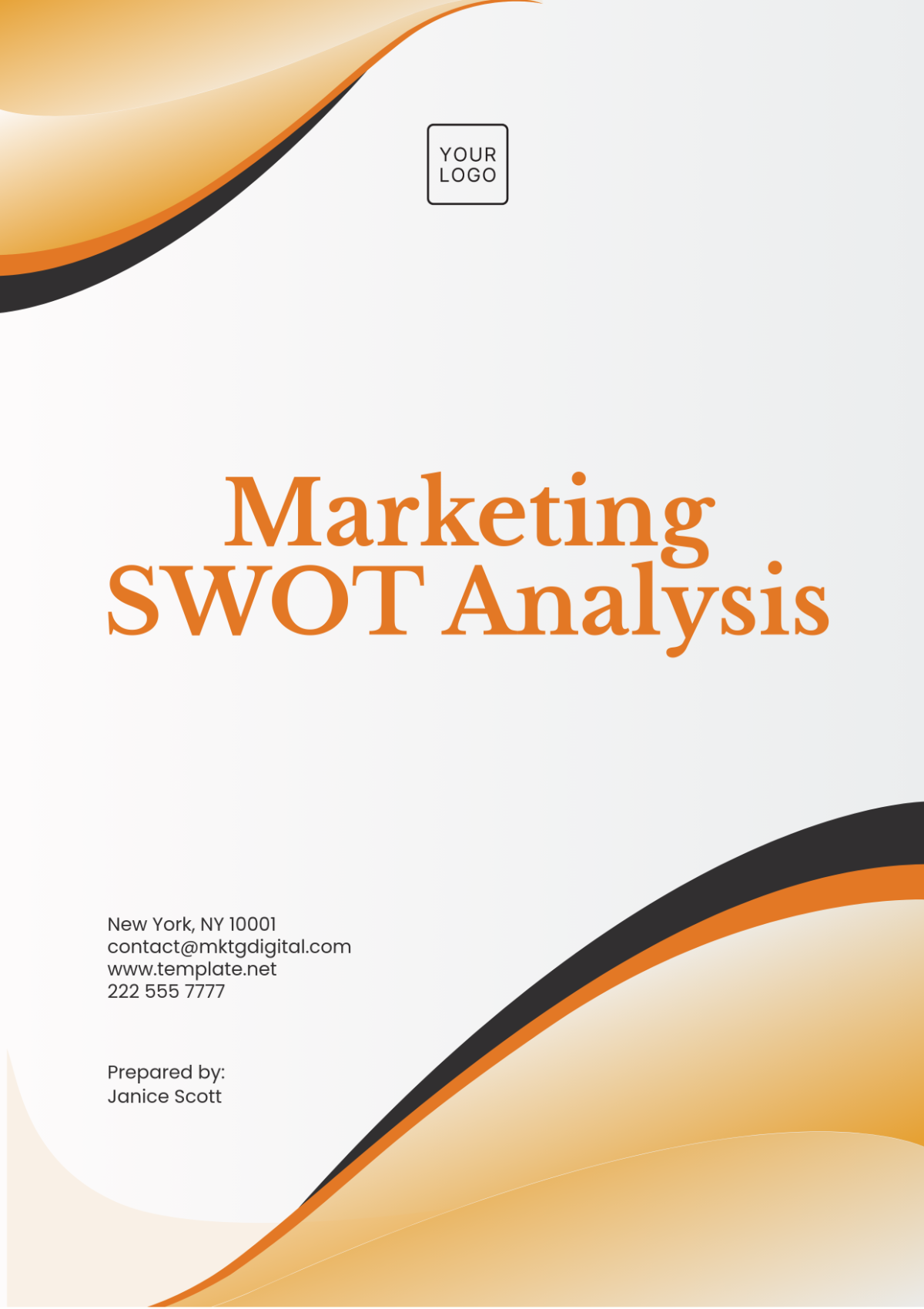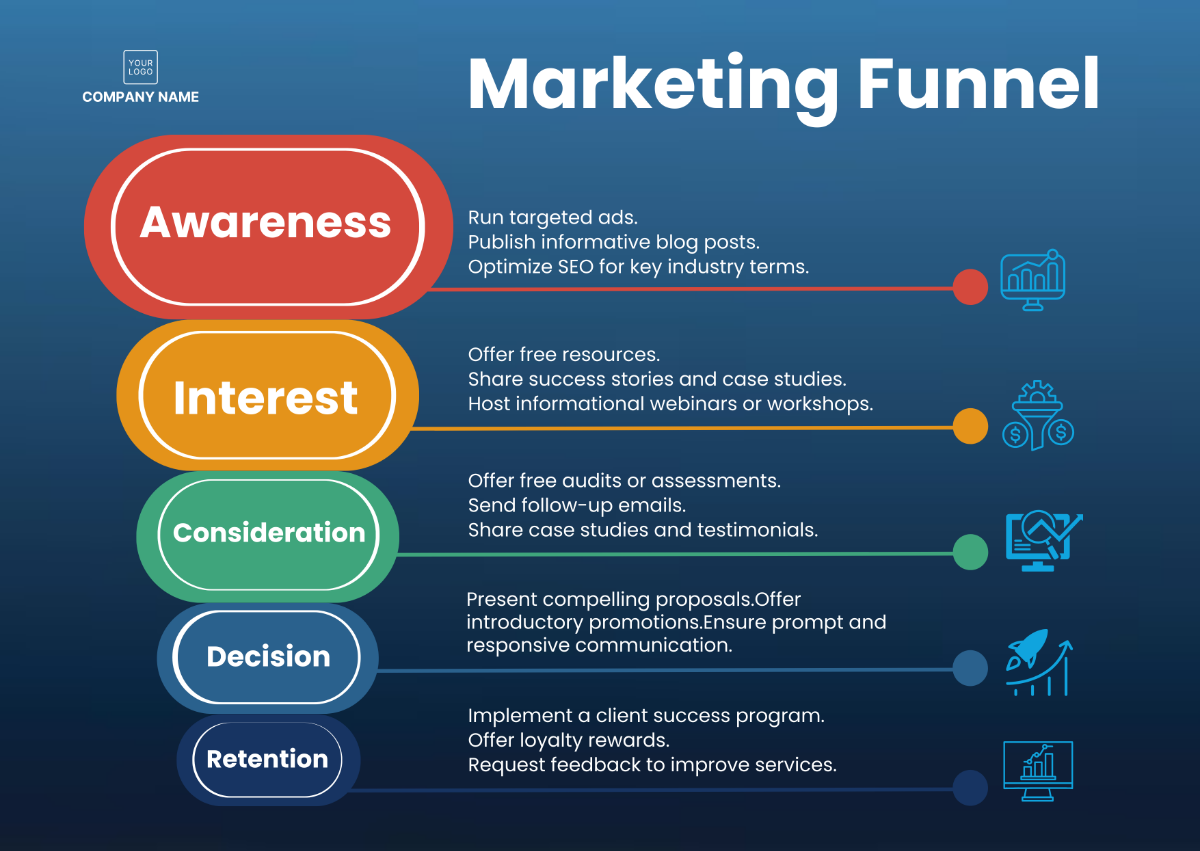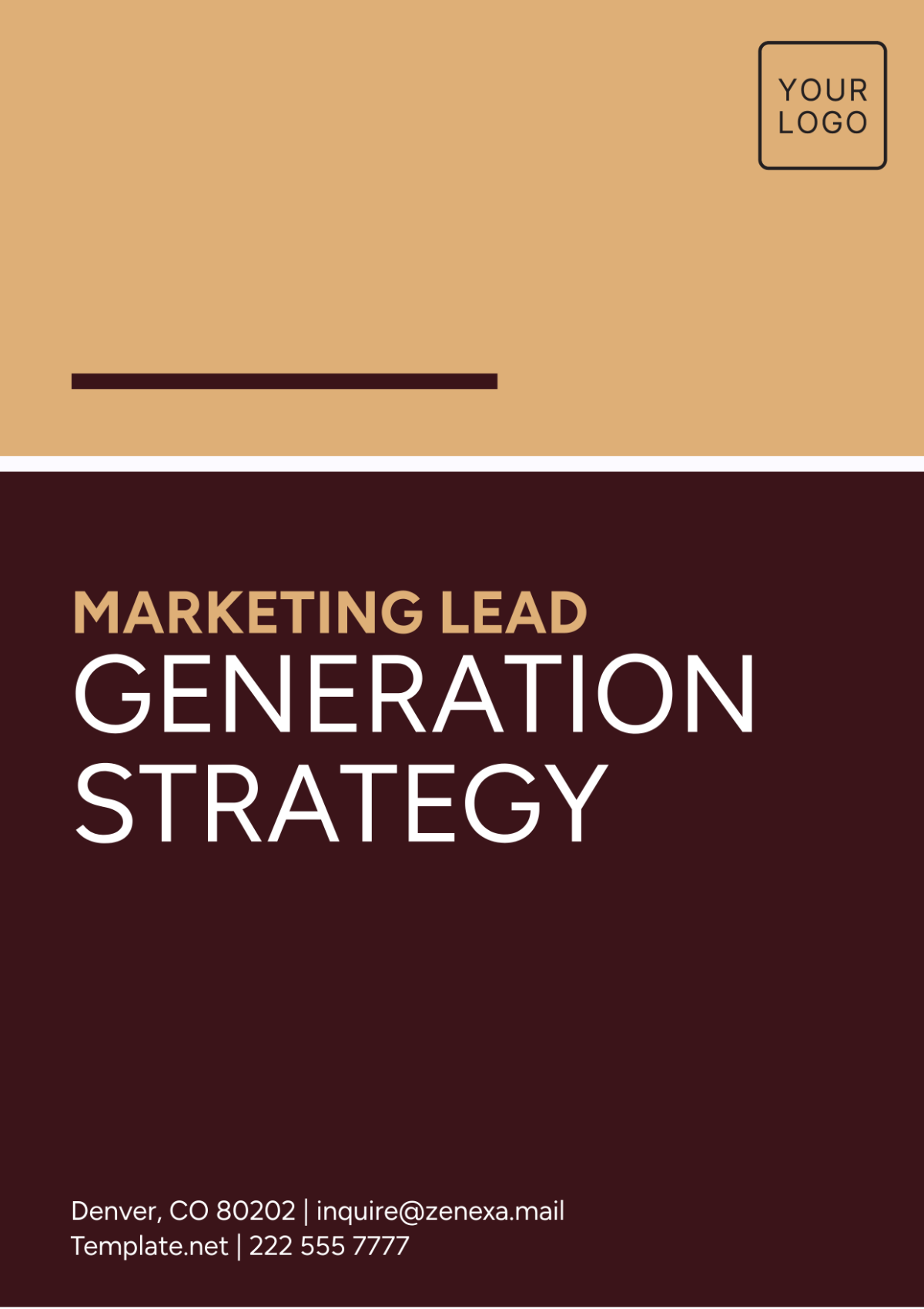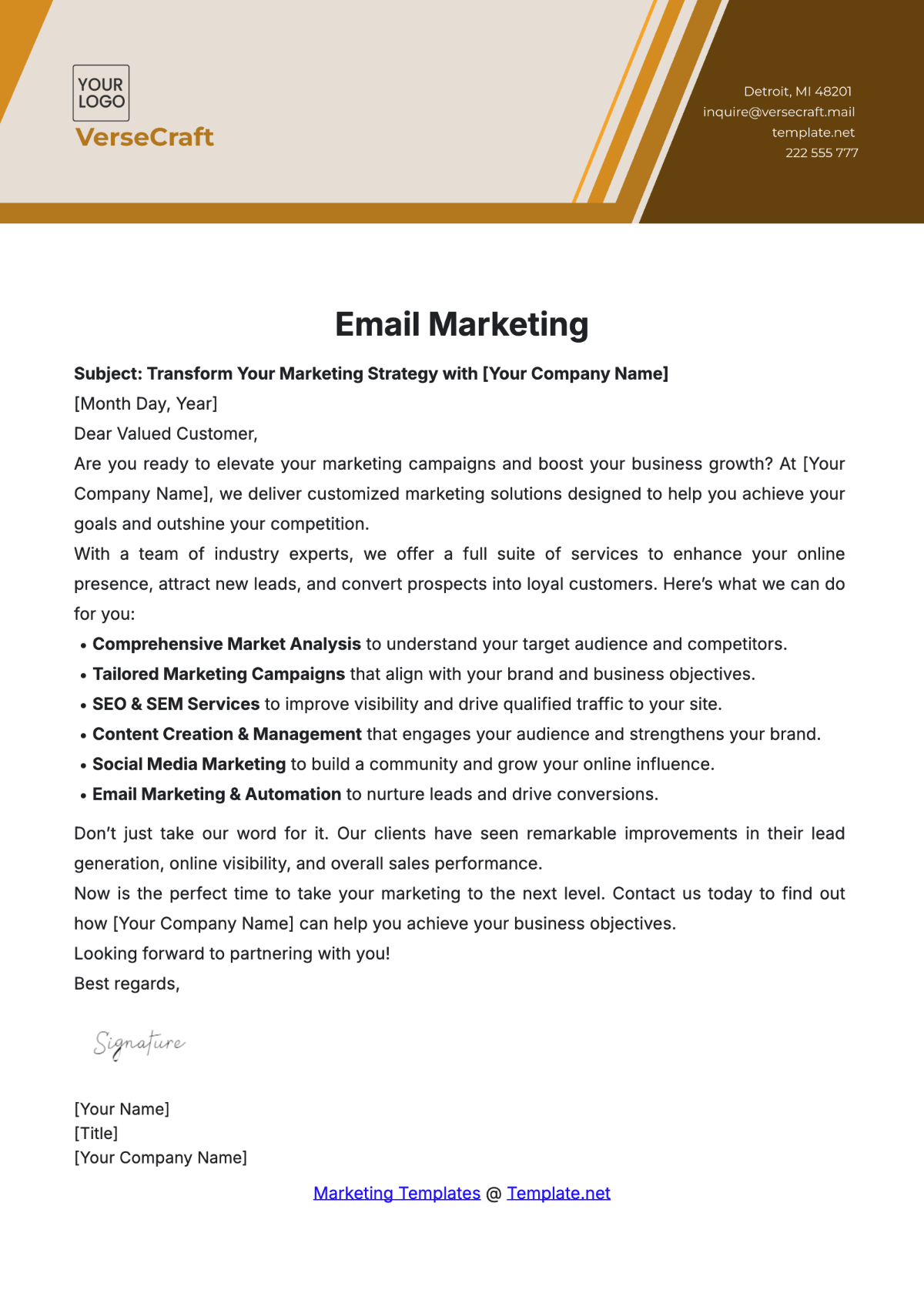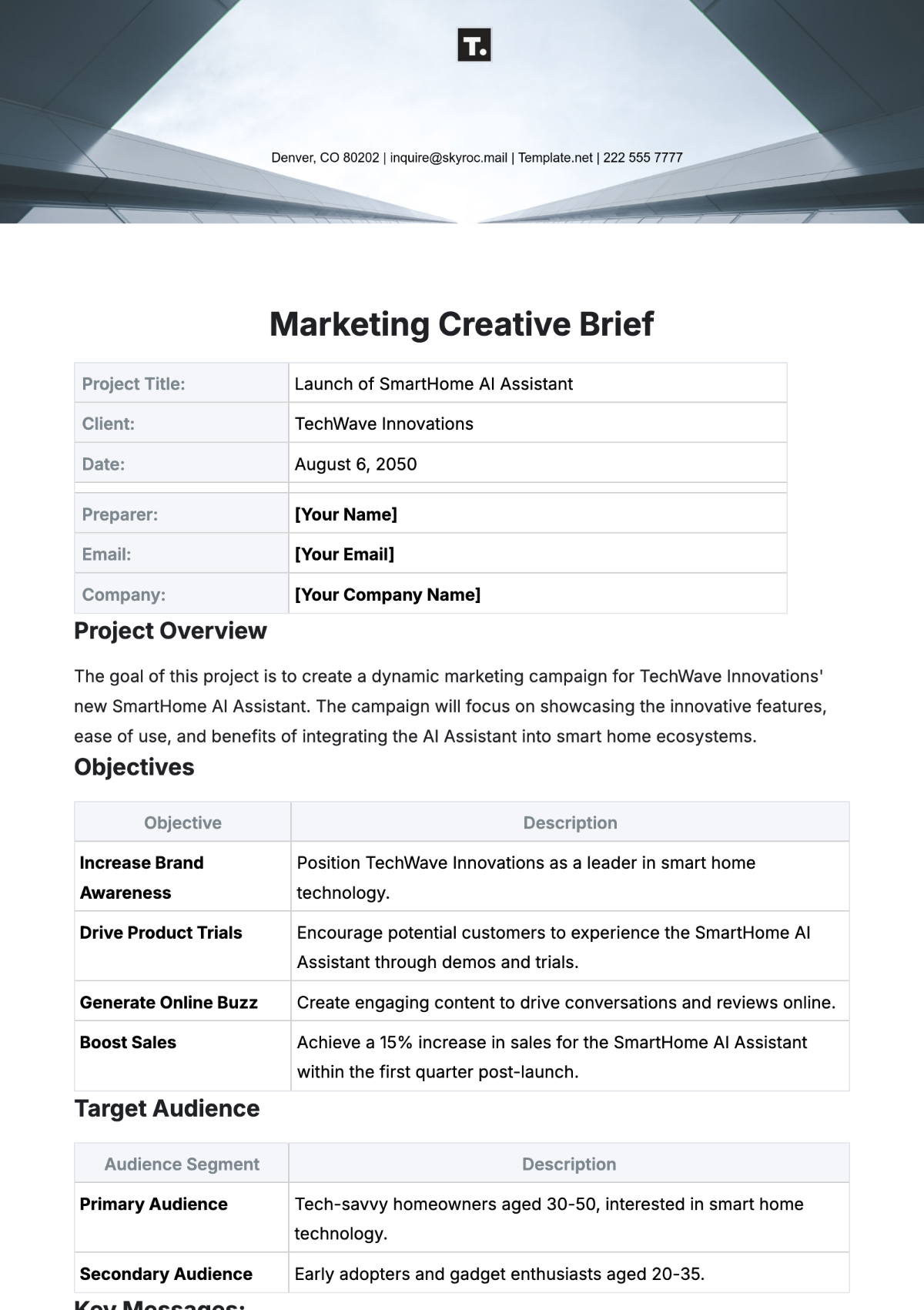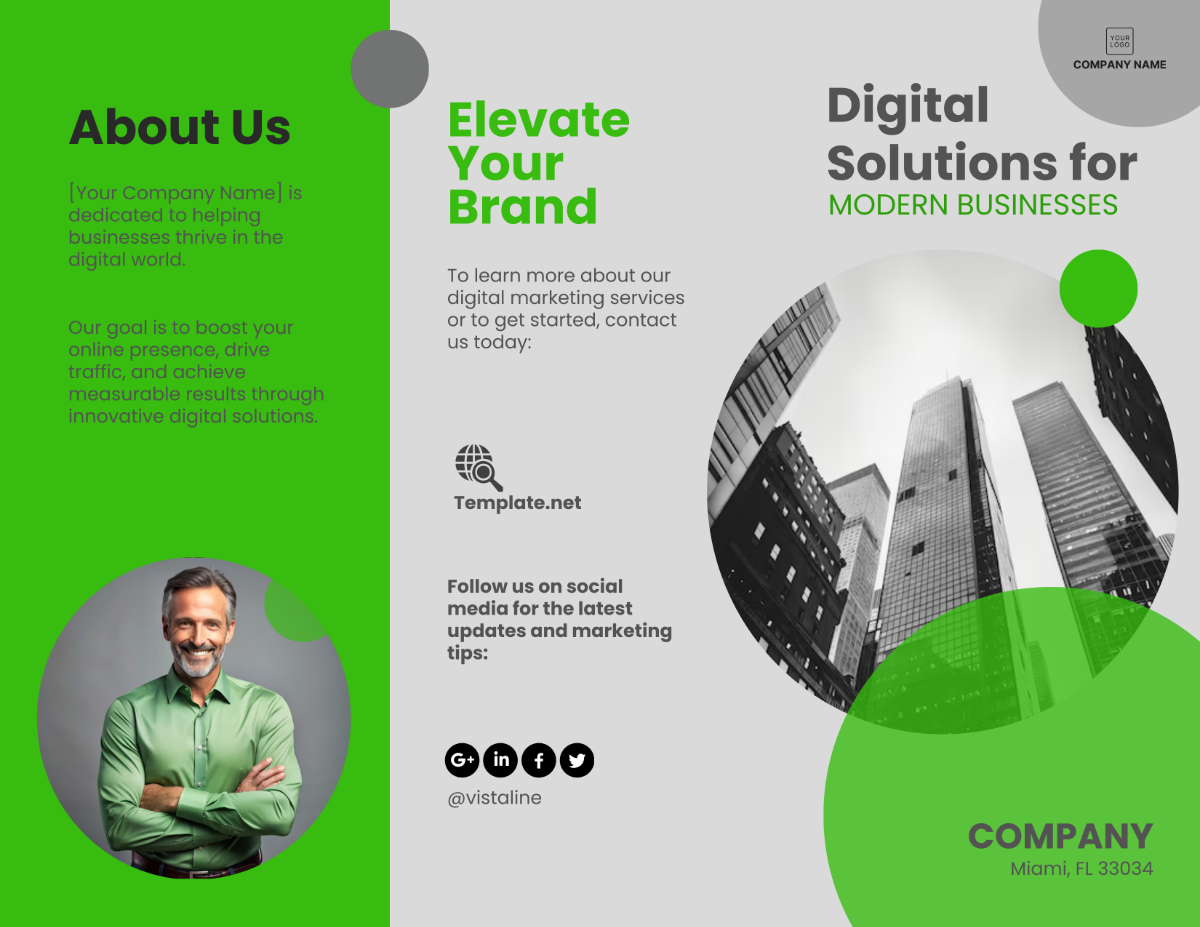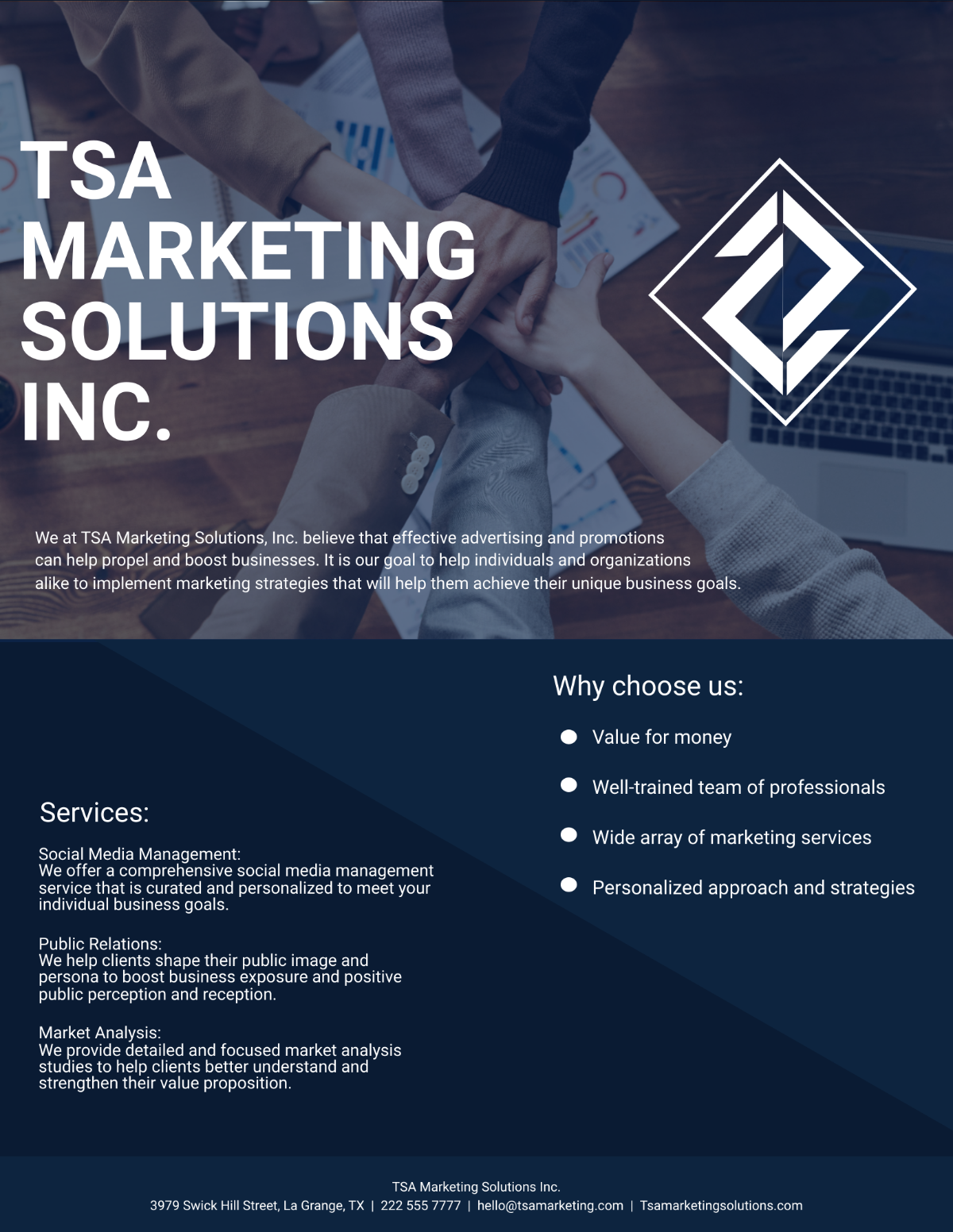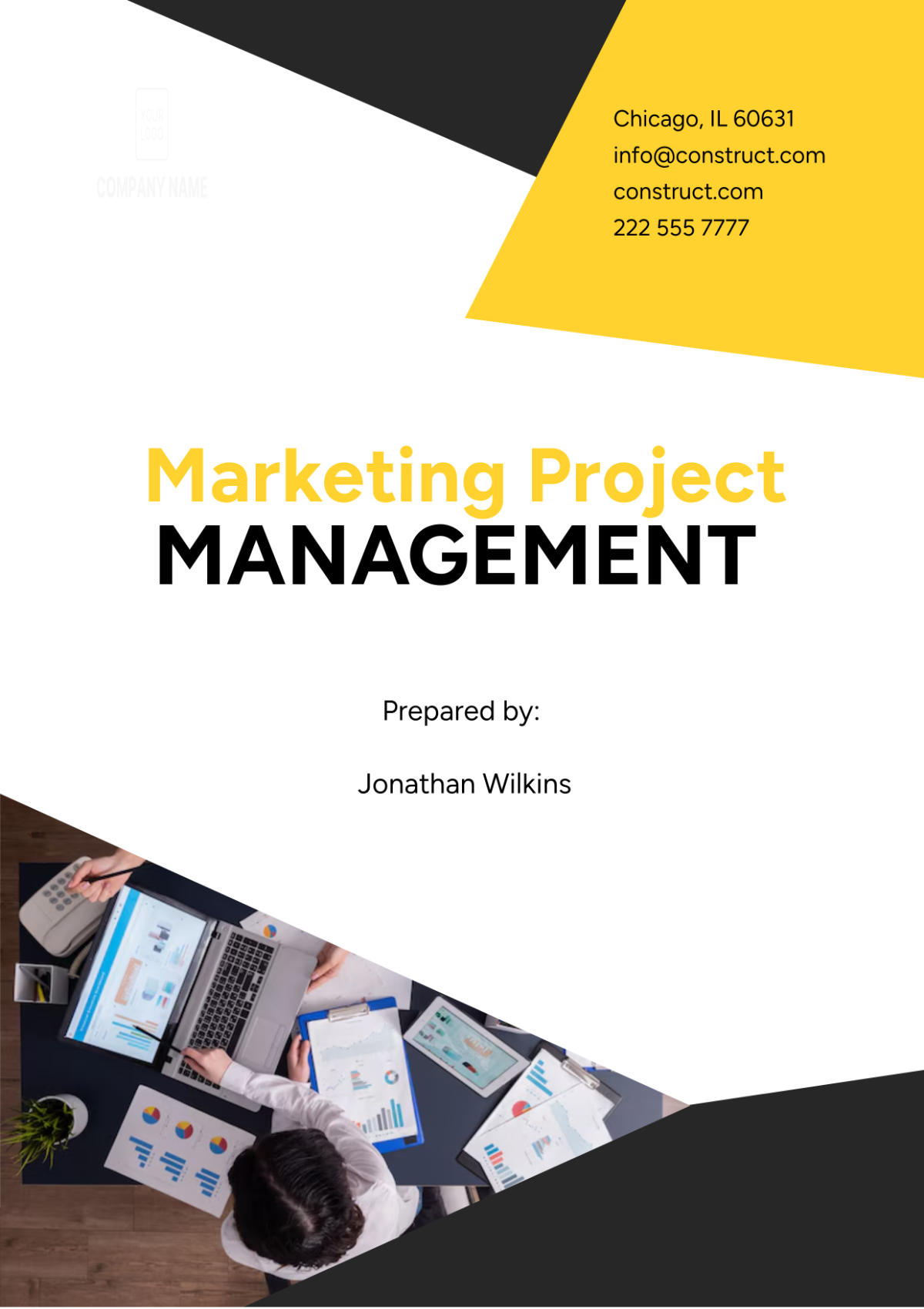Free Marketing Guide to Effective Press Releases
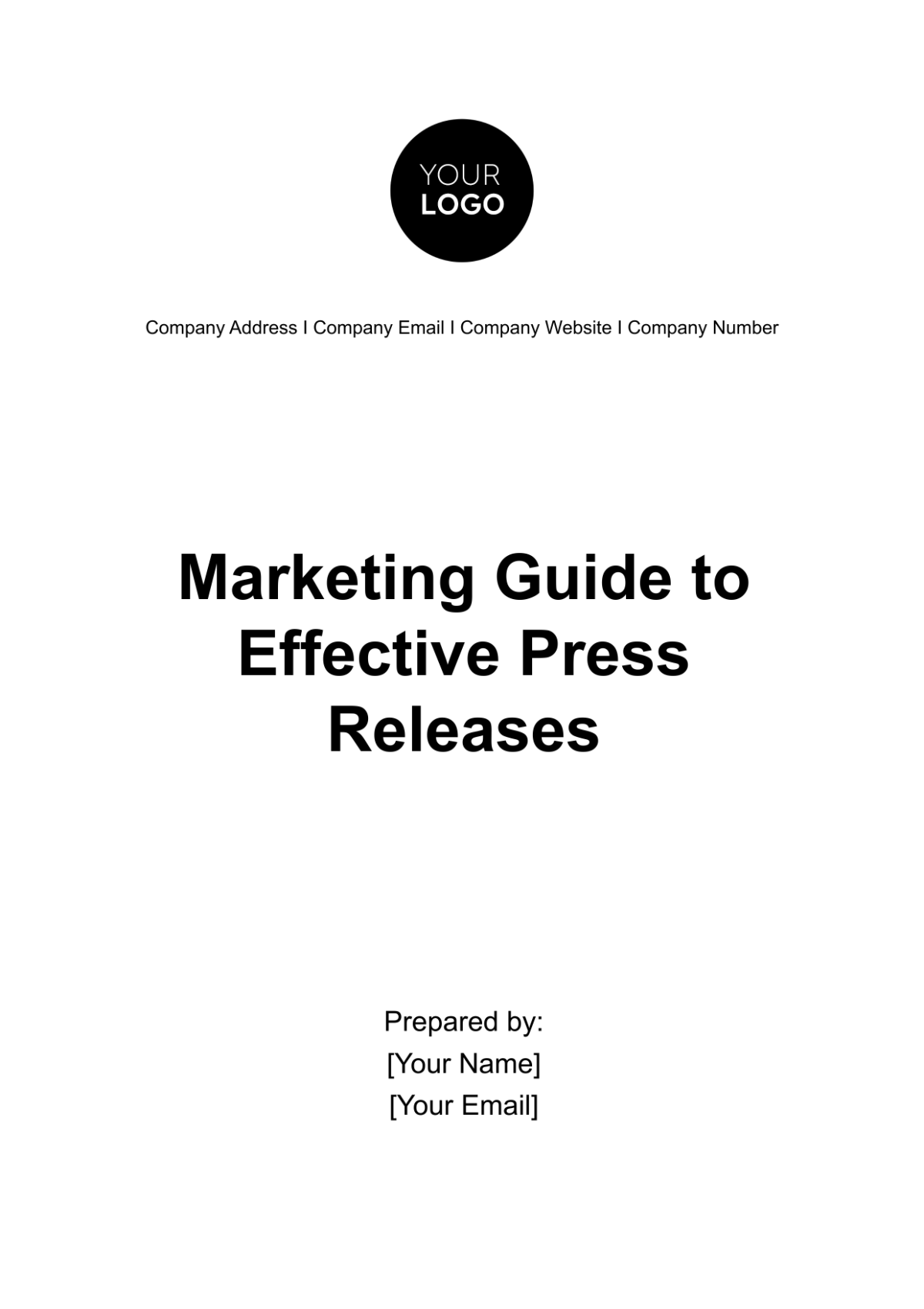
- 100% Customizable, free editor
- Access 1 Million+ Templates, photo’s & graphics
- Download or share as a template
- Click and replace photos, graphics, text, backgrounds
- Resize, crop, AI write & more
- Access advanced editor
Craft impactful press releases effortlessly with Template.net's Marketing Guide to Effective Press Releases Template. This editable and customizable tool simplifies the process, ensuring strategic communication. Tailor your content effortlessly in our AI Editor Tool, guaranteeing a compelling and newsworthy release. Elevate your marketing strategy with this comprehensive guide, paving the way for successful press campaigns.
You may also like
- Marketing
- Marketing
- Marketing Letter
- Marketing Quotation
- Marketing Report
- Marketing Strategic Plan
- Marketing Plan
- Marketing Proposal
- Marketing Flyer
- Marketing Presentation
- Real Estate Marketing Plan
- Marketing Contract
- Marketing Agreement
- Marketing Resume
- Marketing Checklist
- Marketing Brochure
- Marketing Banner
- Marketing Schedule
- Marketing Vector
- Marketing Logo
- Marketing Chart
- Marketing Campaign Plan
- Marketing Budget
- Marketing Postcard
- Marketing Poster
- Marketing Facebook Post
- Marketing Instagram Post
- Marketing Newsletter
- Marketing Infographic
Marketing Guide to Effective Press Releases
Introduction
In today's dynamic marketplace, the right press release can make all the difference. Not only can it generate buzz for a new product or service, but it can also position [Your Company Name] as a leader in the industry. As the media landscape evolves, so do the methods and strategies for effectively communicating with audiences. To truly stand out, a press release must now be more than just an announcement; it should tell a compelling story that resonates.
Why Press Releases Still Matter in a Digital World
With the advent of social media and instantaneous news, one might wonder about the relevance of press releases in the modern age. However, they remain an essential tool for several reasons:
Credibility: A well-crafted press release issued by a reputable company lends an air of authenticity and trustworthiness to the news.
Controlled Narrative: Companies have full control over the content, ensuring that the right message is communicated accurately.
Wide Reach: Using both traditional and digital channels, press releases can reach a vast audience, from journalists to customers and stakeholders.
SEO Benefits: Digital press releases can be optimized for search engines, driving organic traffic to the company's website.
By understanding the continued importance and leveraging the strengths of press releases, [Your Company Name] can ensure that its messages not only get noticed but also make a lasting impact.
What Makes a Press Release Effective?
An effective press release does more than just inform; it captivates, convinces, and creates action. To accomplish these goals, consider the following elements that elevate a press release from good to outstanding:
Clarity: Your message should be clear and concise. Readers, especially busy journalists, shouldn't have to work hard to understand your main point. Make every word count and avoid jargon that could alienate or confuse your audience.
Relevance: Time your press release for maximum impact. It should address current trends, pressing issues, or immediate needs that resonate with your audience. Ask yourself, "Why should they care now?"
Authenticity: Real stories, genuine accomplishments, and sincere testimonials resonate deeply with readers. Avoid exaggerations and stay true to your brand's voice and identity.
Engaging Narrative: A dry list of facts might inform, but it won't inspire. Craft your press release as a story, providing context, building anticipation, and leading readers to a satisfying conclusion.
Visual Appeal: In the digital age, where press releases can be complemented with multimedia, including high-quality images, infographics, or even short videos, can make your announcement more memorable and shareable.
Call to Action (CTA): While a press release should never be overly promotional, it's essential to guide your readers towards the next steps. This could be visiting your website, attending an event, or reaching out for more information.
Well-researched Data: Including reliable and verifiable data can bolster the credibility of your press release. Whether it's a statistic, a study result, or a notable trend, evidence-based information can make your claim more compelling.
By integrating these elements, [Your Company Name] can craft press releases that don't just capture attention but also inspire action, driving meaningful results for the business.
Components of a Successful Press Release
A compelling press release is structured, insightful, and delivers its message seamlessly. While the foundation of a press release remains constant, enhancing each component can set yours apart. Here's a deeper dive into the critical components:
Headline: The first impression truly counts. Your headline should be compelling and summarize the essence of your story. It needs to grab attention, generate curiosity, and make the reader want to delve deeper.
Subheadline: A well-crafted subheadline can expand on the main headline, offering a bit more detail or highlighting a secondary yet essential point. It helps to set the tone and direction of the press release.
Dateline: The dateline grounds your press release in time and space, providing the release date and originating city. This helps journalists and readers gauge the timeliness and relevance of the news.
Introduction: Your introduction should encapsulate the core of your news. It efficiently presents the 5 Ws (Who, What, Where, When, and Why), setting the stage for a more in-depth exploration of the body.
Body: This is where you flesh out your story. Use concise paragraphs, and bullet points for key facts, and include supporting data. Also, remember to:
a. Embedding quotes from key stakeholders, such as CEOs, product managers, or other pivotal figures, provides an authentic voice to your narrative. It bridges the gap between corporate announcements and personal assurance.
b. Background information acts as the foundation upon which your news or statements stand. By offering readers a clear understanding of the larger picture, you enable them to appreciate the gravity and relevance of your announcement.
Multimedia Elements: The digital age allows us to go beyond text:
a. Images: High-resolution photos can showcase products, events, or key people related to the news. Ensure that images reflect the brand's ethos and are professionally shot. Always provide captions to give context, and if necessary, usage rights for third-party publications.
b. Videos: Short clips can provide a dynamic view of an event, product demonstration, or an executive interview. Videos should be of professional quality, well-edited, and formatted for easy embedding or sharing. Always ensure that videos have clear audio, and consider adding subtitles for accessibility.
c. Infographics: Design infographics with clarity and brand-consistency in mind. Use a color palette that aligns with your brand, and ensure the data is presented in a logical, easily digestible format. Providing a downloadable or shareable link can also increase its reach and impact.
Boilerplate: Think of this as your company's "about" section in a nutshell. It offers readers a snapshot of what [Your Company Name] does, its history, mission, and any other pertinent details. Ensure this section is up-to-date and aligns with your brand's current positioning.
Contact Information: Essential for journalists or stakeholders who may want further details, interviews, or clarifications. Include:
a. It's crucial to identify a dedicated point of contact for all media inquiries. This individual, is typically a Public Relations (PR) representative or a Communications Specialist.
b. The provided email should be active and consistently monitored, especially in the days following the press release distribution. It's recommended to have a dedicated PR or media-related email address to streamline communications and ensure inquiries don't get lost among other emails.
c. A direct line or a dedicated number for press inquiries is ideal. This ensures that media representatives can quickly get in touch without being rerouted through various departments or facing unnecessary delays.
Hyperlinks: If you're distributing your press release digitally, consider adding relevant links. These could direct readers to product pages, detailed reports, or related announcements, enhancing their understanding and engagement.
By meticulously crafting each component of the press release, the company can ensure a seamless, engaging, and informative experience for the reader, maximizing the impact of the news being delivered.
Distribution Strategies
Distributing a press release isn't just about sending out information; it's about ensuring that your news lands in the right hands and resonates with the right audience. To elevate the impact of your press release, consider the following sophisticated distribution strategies:
Targeted Email Campaigns:
Curated Lists: Instead of sending mass emails, segment your contact list based on industry relevance, past engagements, or media specializations. This ensures your release gets to journalists or outlets most likely to be interested in your news.
Personalization: Addressing recipients by name and perhaps mentioning a previous article they wrote or a mutual interest can increase the chance of your email being opened and read.
Press Release Distribution Services:
Wide Reach: Utilizing premium services can push your release to hundreds of media outlets simultaneously, ensuring vast coverage.
Niche Distribution: Some services cater to specific industries or demographics. Finding one that aligns with your news can offer targeted reach and greater engagement.
Social Media Channels:
Tailored Posts: Customize your press release posts for each social platform, considering the audience's preferences and the platform's strengths.
Engage Influencers: Partnering with industry influencers can amplify your message, reaching audiences that trust and value their insights.
Measuring the Impact of Your Press Release
In the world of communications, understanding the effectiveness of your press release is paramount. It's not just about sending out news, but about gauging its resonance, reach, and influence. To achieve a comprehensive understanding of your press release's impact, consider these advanced measurement strategies:
Metric | Description |
Media Coverage | Number of outlets that picked up your press release. |
By diving deep into these metrics, the company can attain a holistic understanding of the press release's effectiveness, offering insights that can refine future communications strategies and enhance the brand's media presence.
Case Studies: Press Releases That Made a Difference
Examining real-life examples can provide invaluable insights into the potential and influence a well-executed press release can have. These case studies showcase not just the immediate impact but also the lasting effects on brand perception, positioning, and business growth.
Case Study 1: [Your Company Name]'s Revolutionary Product Launch in 2051
Background: In March 2051, [Your Company Name] unveiled a groundbreaking product, aiming to reshape industry standards.
Strategy: The press release highlighted the product's unique features, and its benefits to consumers, and included testimonials from early adopters and industry experts.
Outcome:
Over 500 media mentions across top-tier publications.
A 60% surge in website traffic with a 15% increase in product inquiries.
A ripple effect in online forums and social media, sparking discussions and anticipation.
Key Takeaway: Pairing tangible product benefits with authentic user testimonials can create a compelling narrative that the media and public gravitate towards.
Case Study 2: [Your Company Name]'s [Title] in [YYYY]
Background:
Strategy:
Outcome:
Key Takeaway:
Case Study 3: [Your Company Name]'s [Title] in [YYYY]
Background:
Strategy:
Outcome:
Key Takeaway:
Conclusion
Crafting an effective press release is both an art and a science. By ensuring clarity, relevance, and authenticity, [Your Company Name] can ensure its messages resonate with the desired audience. Remember to measure your outcomes to continuously refine your approach.
Good luck, and may your next press release make headlines!

